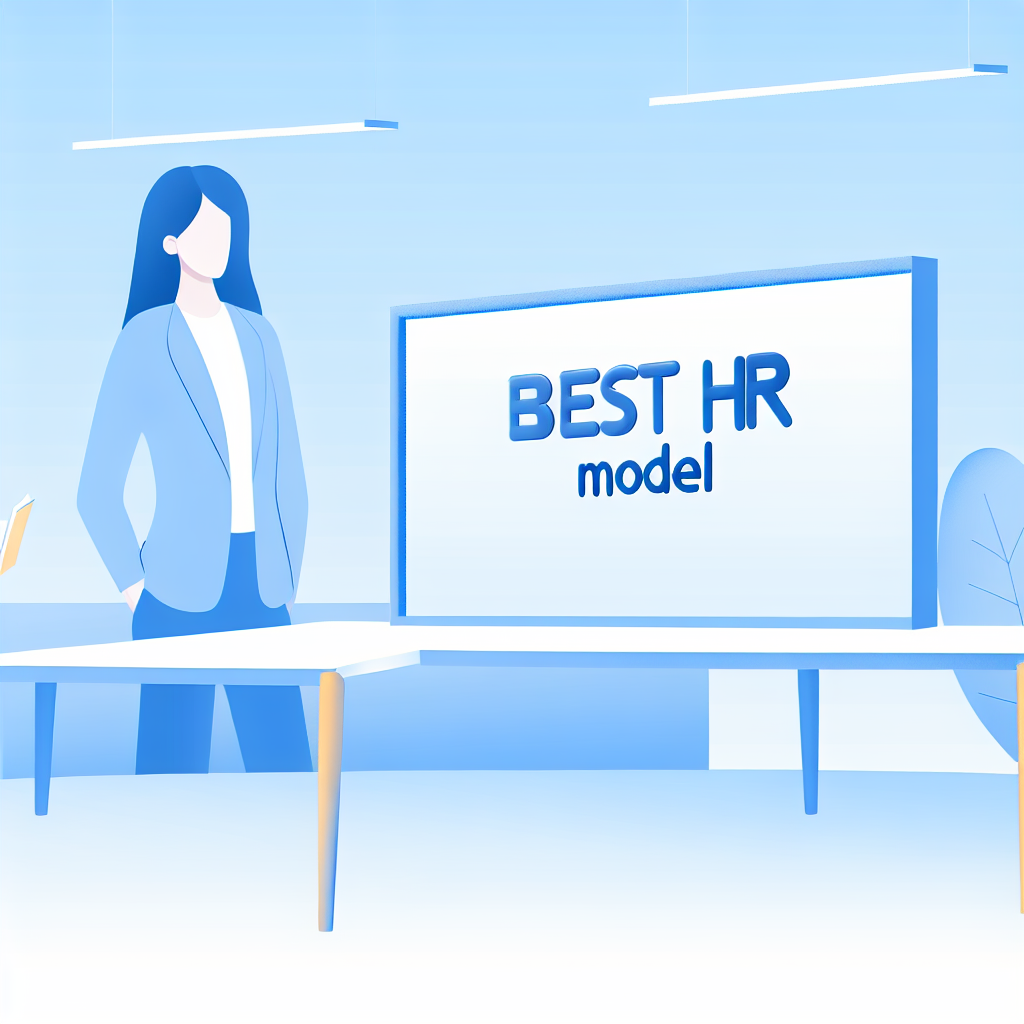
In today’s dynamic business environment, defining the most effective HR model can be quite subjective. It hinges on specific organisational needs, size, and industry. However, several critical factors contribute to an effective HR model, with modern trends increasingly favouring digitalisation, customisation, and integration. This article delves into the best HR models, their significance, and the current trends shaping the future of human resource management.
Significance of HR Models
Understanding the significance of HR models is essential in appreciating their role in an organisation’s success. Here are key reasons why an effective HR model is crucial:
- Efficiency and Productivity: An effectively structured HR model can considerably boost workplace efficiency and productivity. By streamlining processes, it minimises manual errors and enhances data accuracy, making it easier for HR professionals to focus on strategic initiatives.
- Employee Experience: A well-designed HR model prioritises the improvement of employee experiences. This encompasses comprehensive onboarding procedures, continuous development opportunities, and improved communication channels that facilitate better engagement.
- Strategic Workforce Planning: The modern HR models are increasingly adopting advanced analytics and strategic workforce planning. This equips organisations with the tools to make informed decisions regarding talent acquisition, retention, and professional development.
Current Trends in HR Models
Keeping abreast of current trends provides insight into where HR practices are heading. Here are notable trends impacting HR models:
- Digitalisation: The HR landscape is rapidly embracing digitisation. HR tools and applications have become essential for efficiently managing various HR tasks, such as employee enrolment in benefits programmes and recruitment processes.
- Customisation: Recognising that each organisation is distinct, HR applications featuring customisation options allow businesses to tailor functionalities to their specific needs. This capability helps ensure alignment with branding and operational workflows.
- Integration Capabilities: Seamless integration with other HR systems is gaining importance. Comprehensive integration facilitates smoother HR processes and enhances accuracy by minimising errors associated with manual data entry.
- Cloud-Based Solutions: The popularity of cloud-based HR solutions continues to rise, given their scalability, flexibility, and financial viability. Such solutions are suitable for companies of all sizes and routinely offer updates and feature enhancements.
Key Benefits of Effective HR Models
The advantages of implementing an effective HR model are plentiful. Here are some core benefits:
- User-Friendly Interface: A straightforward and easy-to-navigate interface is crucial for maintaining high productivity. An intuitive platform can lessen confusion and frustration, allowing HR professionals to dedicate their efforts to more strategic tasks.
- Comprehensive Reporting: Comprehensive analytics and reporting functionalities are vital for informed decision-making. By tracking hiring success and employee performance, HR teams gain the insights needed to drive improvements.
- Cost Efficiency: Many HR applications employ subscription-based pricing structures, offering a cost-effective solution for organisations. Several platforms even provide free trials, enabling businesses to evaluate services before committing financially.
- Mobile Access: With mobile technology’s widespread adoption, mobile-friendly HR apps empower HR professionals to manage processes on the go, ensuring smooth operations regardless of location.
Examples of Effective HR Models
To further illustrate the effectiveness of contemporary HR models, let’s examine some popular HR applications:
- BambooHR: This platform offers a thorough applicant tracking system (ATS), personalised job postings, integrated onboarding tools, and detailed reporting capabilities. Its user-friendly nature makes it particularly beneficial for small to medium-sized businesses.
- Workday HCM: Workday provides an extensive end-to-end HR solution that incorporates global talent sourcing, unified HR and talent management systems, and advanced analytics for insightful workforce planning. However, its complexity may be challenging for smaller organisations to navigate, often resulting in a steeper learning curve.
The Evolution of HR Models
As organisations evolve, so will their HR models. Factors such as technological advancements, changes in employee expectations, and the urgency for agile workforce management will continuously reshape the HR landscape. Here are notable changes to expect:
- Increased Focus on Employee Wellbeing: With the growing understanding of the importance of mental health, HR models are expected to incorporate more wellness initiatives and programmes aimed at fostering employee wellbeing.
- AI and Automation: Tools employing artificial intelligence will increasingly streamline HR tasks, enhancing efficiency in areas such as recruitment and employee engagement through data-driven insights.
- Remote Work Integration: As remote work becomes a norm for many companies, HR models will need to adapt to support a hybrid workforce, ensuring that engagement and productivity remain high.
Implementing an Effective HR Model
For HR professionals contemplating the implementation of a new HR model, here are practical steps to consider:
- Assess Organisational Needs: Conduct a thorough analysis to ascertain the unique needs of your organisation. Understanding specific objectives and challenges will inform the selection of the most fitting HR model.
- Prioritise Integration: When selecting an HR solution, assess its compatibility with existing tools. Seamless integration is vital for maintaining data accuracy and simplifying workflows.
- Focus on User Experience: Opt for platforms that offer user-friendly interfaces. A positive user experience is essential for overall employee satisfaction and engagement.
- Continuous Monitoring and Feedback: Post-implementation, continuously monitor the effectiveness of the HR model. Gather feedback from users to identify areas for improvement.
Conclusion
Selecting the best HR model is a process that demands careful consideration tailored to an organisation’s specific context. The emphasis on digitalisation, customisation, and integration in modern HR practices has the potential to transform HR operations. By understanding current trends and leveraging the benefits of effective HR models, organisations can significantly enhance their talent management processes and overall productivity. As HR continues to evolve, remaining adaptable and responsive to changing environments will be essential for sustained success.
For more insights on optimising human resource models, consider exploring resources such as Fliplet.
Vadim Kouznetsov is a distinguished entrepreneur and the visionary founder and CEO of JobXDubai.com, the UAE’s rapidly expanding job board. Renowned for his expertise in bridging the gap between job seekers and employment opportunities, Vadim has become a leading authority in the recruitment and job market of Dubai.
